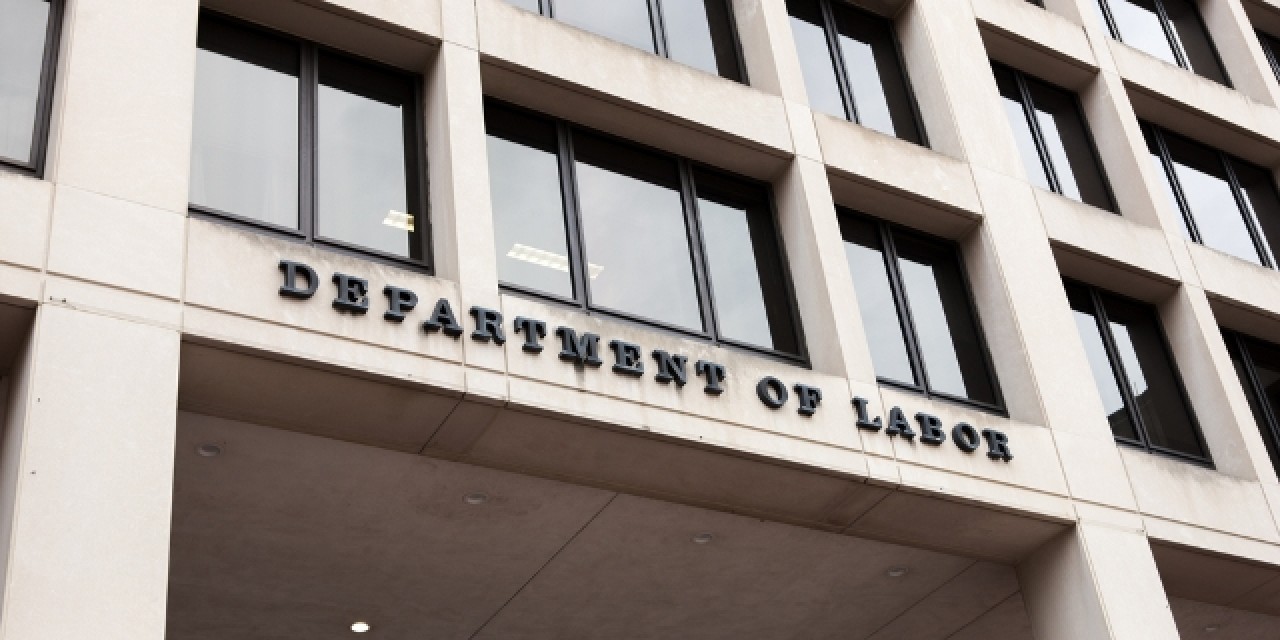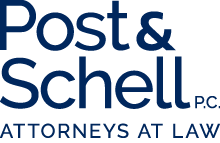

DOL Issues Revised Regs on the FFCRA in Response to S.D.N.Y Decision

As I previously reported, on August 3, 2020, U.S. District Judge Paul Oetken of the U.S. District Court for the Southern District of New York, struck down four key parts of the Department of Labor’s (DOL) regulations implementing the Families First Coronavirus Response Act (FFCRA).
While Judge Oetken’s decision left many open questions for employers, on the evening of Friday, September 11, 2020, the DOL answered those questions by issuing revised regulations specifically in response to Judge Oetken’s ruling.
As you may recall, Judge Oetken invalidated the following portions of the DOL’s FFCRA regulations:
- The requirement that employees may only take FFCRA leave when their employers have work available for them to perform.
- The requirement that employers and employees must agree in order for an employee to take intermittent FFCRA leave.
- The broad definition of “health care provider” under the FFCRA’s exemption allowing employers to exclude certain health care employees from the coverage of the FFCRA.
- The requirement that employees must provide documentation supporting their FFCRA leave request prior to taking such leave.
As explained in more detail below, the DOL’s revised regulations, which will become effective immediately upon publication (which is scheduled to be on September 16, 2020), address Judge Oetken’s ruling as follows:
- Reaffirming that FFCRA leave may be taken only if employers have work available from which employees can take leave, including a more robust explanation as to why this requirement is critical.
- Reaffirming that intermittent leave under FFCRA can only be taken with employer approval.
- Providing a narrower definition of “health care provider” under the FFCRA’s exemption allowing employers to exclude certain health care employees from the coverage of the FFCRA.
- Providing clarification regarding when an employee must provide notice of the need for FFCRA leave and supporting documentation.
The DOL also issued additional FAQs (FAQs 101-103) regarding the FFCRA and revised a number of its FAQs to address Judge Oetken’s ruling and the DOL’s revised regulations.
Work-Availability Requirement
With regard to the work availability requirement, the DOL doubled-down on its position that employees may only take FFCRA leave when their employers have work available for them to perform. In so doing, the DOL re-emphasized that those employees who have been furloughed, placed on a reduced work schedule, temporarily laid off, or are out of work due to their employer’s place of business closing remain ineligible for FFCRA leave.
The DOL noted that Judge Oetken’s ruling regarding the work availability requirement mainly took issue with the DOL’s “barebones explanation” for this requirement. As such, the DOL’s revised regulations focus primarily on providing a more fulsome explanation as to why this requirement is necessary. Specifically, the DOL explained that the employees’ FFCRA reason for leave must be the sole (i.e., the “but-for”) reason they are not working in order to be eligible for FFCRA leave.
Notably, however, the DOL emphasized that the unavailability of work must be due to legitimate, nondiscriminatory, non-retaliatory business reasons. As such, the DOL made it clear that employers may not withhold work in order to prevent their employees from taking FFCRA leave.
As such, not much has changed with regard to the work availability requirement under the DOL’s revised regulations.
Intermittent Leave
Like its position regarding the work availability requirement, the DOL did not revise its position regarding intermittent FFCRA leave. Under the revised regulations (like the original regulations), employees are only permitted to take intermittent FFCRA leave if their employer consented to such intermittent use (and only if they are caring for their son or daughter whose school or place of care has been closed, or the childcare provider is unavailable, due to COVID-19). Again, given Judge Oetken’s opinion focused mostly on the DOL’s lack of explanation regarding this requirement, the DOL focused its revised regulations on providing a more fulsome explanation regarding the employer consent requirement.
In an interesting move, however, the DOL’s preamble to the revised regulations explains that employees taking leave to care for their children whose schools are operating on an alternate day (or other hybrid-attendance), are not actually taking intermittent leave and therefore, do not need their employers’ permission to take such leave. In so stating, the DOL explained that:
In an alternate day or other hybrid-attendance schedule implemented due to COVID-19, the school is physically closed with respect to certain students on particular days as determined and directed by the school, not the employee. The employee might be required to take FFCRA leave on Monday, Wednesday, and Friday of one week and Tuesday and Thursday of the next, provided that leave is needed to actually care for the child during that time and no other suitable person is available to do so. For the purposes of the FFCRA, each day of school closure constitutes a separate reason for FFCRA leave that ends when the school opens the next day. The employee may take leave due to a school closure until that qualifying reason ends (i.e., the school opened the next day), and then take leave again when a new qualifying reason arises (i.e., school closes again the day after that). Under the FFCRA, intermittent leave is not needed because the school literally closes . . . and opens repeatedly. The same reasoning applies to longer and shorter alternating schedules, such as where the employee’s child attends in-person classes for half of each school day or where the employee’s child attends in-person classes every other week and the employee takes FFCRA leave to care for the child during the half-days or weeks in which the child does not attend classes in person.
Definition of “Health Care Provider”
In his ruling, Judge Oetken (not surprisingly) held that the DOL’s definition of “health care provider” under the FFCRA for purposes of determining who can be excluded from coverage under the FFCRA was too broad. In response, the DOL revised its definition of “health care provider” to include only the following:
- Those “health care providers” under the FMLA’s traditional definition of “health care provider” (such as doctors of medicine and osteopathy); and
- Any other employee who is capable of providing health care services, meaning he or she is employed to provide diagnostic services, preventive services, treatment services, or other services that are integrated with and necessary to the provision of patient care and, if not provided, would adversely impact patient care.
The DOL went a step further and increased the restrictions on the categories of employees under #2 who may qualify as a health care provider to:
- Nurses, nurse assistants, medical technicians, and others directly providing diagnostic, preventive, treatment, or other integrated services;
- Employees providing diagnostic, preventive, treatment, or other integrated services “under the supervision, order, or direction of, or providing direct assistance to” a health care provider; and
- Employees who are “otherwise integrated into and necessary to the provision of health care services, such as laboratory technicians who process test results necessary to diagnoses and treatment.”
The revised regulations further limit the meaning of “diagnostic, preventive, treatment, or other integrated services,” as follows:
- Diagnostic services include taking or processing samples, performing or assisting in the performance of x-rays or other diagnostic tests or procedures, and interpreting test or procedure results.
- Preventive services include screenings, check-ups, and counseling to prevent illnesses, disease, or other health problems.
- Treatment services include performing surgery or other invasive or physical interventions, prescribing medication, providing or administering prescribed medication, physical therapy, and providing or assisting in breathing treatments.
- Other Integrated services are services that are integrated with and necessary to diagnostic, preventive, or treatment services and, if not provided, would adversely impact patient care, include bathing, dressing, hand feeding, taking vital signs, setting up medical equipment for procedures, and transporting patients and samples.
The DOL again went a step further and specifically excluded those who do not actually provide such health care services from the definition of “health care provider” “even if their services could affect the provision of health care services, such as IT professionals, building maintenance staff, human resources personnel, cooks, food services works, records managers, consultants, and billers.”
Notably, this definition is much more limited than the DOL’s prior definition of “health care provider,” and focuses more on the actual employee, and specifically the work the employee is performing, instead of the employer and the services the employer is providing in determining whether an employee is a “health care provider” for FFCRA leave purposes.
Documentation
Finally, the DOL’s original regulations required employees requesting FFCRA leave to provide certain documentation to support their leave request prior to going on leave. However, Judge Oetken struck the requirement that employees must produce such documentation prior to going on leave, reasoning that because the FFCRA does not impose such a requirement, the DOL overstepped in imposing one.
In response, the DOL’s revised regulations now require that documentation regarding the need for leave need only be provided “as soon as practicable, which in most cases will be when the employee provides notice” of the need for FFCRA leave. Moreover, if the need for FFCRA leave to care for a child whose school or place of care is closed is foreseeable (e.g., where the employee knows in advance that school will be closed), the DOL’s revised regulations state that “it will generally be practicable to provide notice prior to the need to take leave.”
Key Takeaways:
In addition to the above, there are a few key takeaways for employers given the DOL’s revised regulations and FAQs:
- Under FAQ #102, the DOL makes it clear that, “[b]ased on the specific circumstances in the case and language of [the] order,” the DOL interprets Judge Oetken’s order striking down its original regulations as applying nationwide. As such, if there was any question regarding whether employers outside of New York should comply with Judge Oetken’s order, that question has been resolved (at least in the eyes of the DOL).
- Given the DOL’s preamble, employers should carefully evaluate whether their employees are actually taking FFCRA leave “on an intermittent basis” when their children’s school or daycare is “closed.”
- Employers should immediately review their policies and practices of excluding “health care providers” from coverage of the FFCRA to ensure they are consistent with the DOL’s new definition. It is recommended employers seek advice from their employment counsel prior to exempting any employees from the FFCRA’s coverage.
- Employers should ensure they are not requiring employees to provide documentation supporting FFCRA leave before the employee starts leave.
- Given the revised regulations did not make significant changes to the DOL’s original regulations regarding the work availability and intermittent leave use, it is possible (albeit likely) that the State of New York (or other states or advocacy organizations) will challenge these revised regulations in court for similar reasons the original regulations were challenged. Stay tuned.
Our Employment & Employee Relations Practice and COVID-19 Taskforce has been closely monitoring the rapidly evolving COVID-19 pandemic, its impact on employers, and the federal, state, and local governments’ response to the COVID-19 pandemic. If you have any specific questions regarding the DOL’s revised regulations or guidance or any of the employment implications of the COVID-19 pandemic, we encourage you to reach out to our teams. We are here to answer any of your questions and will continue to keep you informed on the latest employment-related latest developments in this fast-evolving area.
Disclaimer: This post does not offer specific legal advice, nor does it create an attorney-client relationship. You should not reach any legal conclusions based on the information contained in this post without first seeking the advice of counsel.
Related Industries
- Construction
- Banking and Financial Services
- Commercial Transportation
- Health Care
- Higher Education
- Insurance
- Manufacturing
- Medical Device & Life Sciences
- Municipal & Government
- Pharmaceutical
- Professional Services
- Retail
- Hospitality
- Energy and Utilities
- Heavy/Highway & Utility Construction
- Supply Chain & Logistics
- Private Equity & Venture Capital


